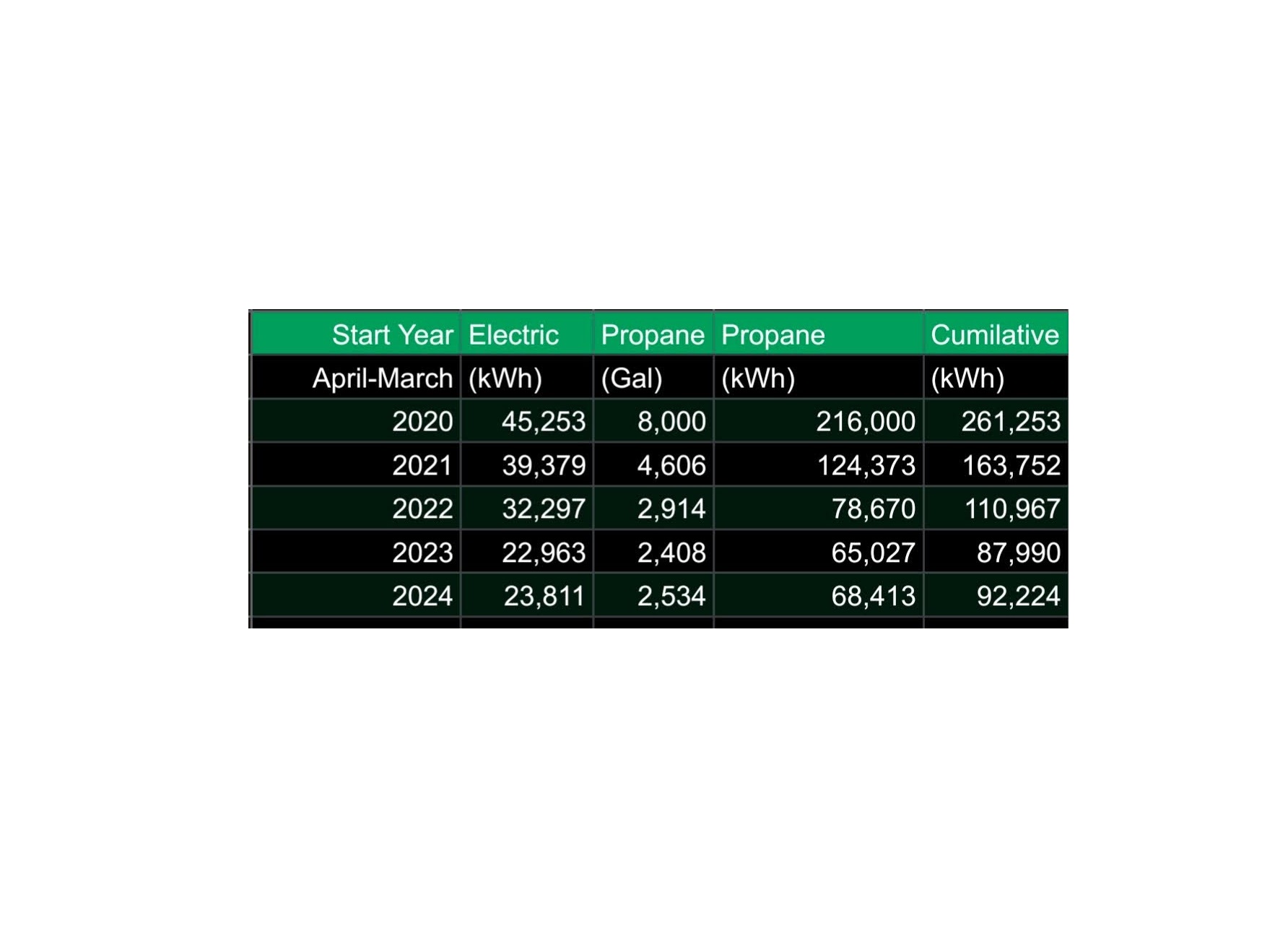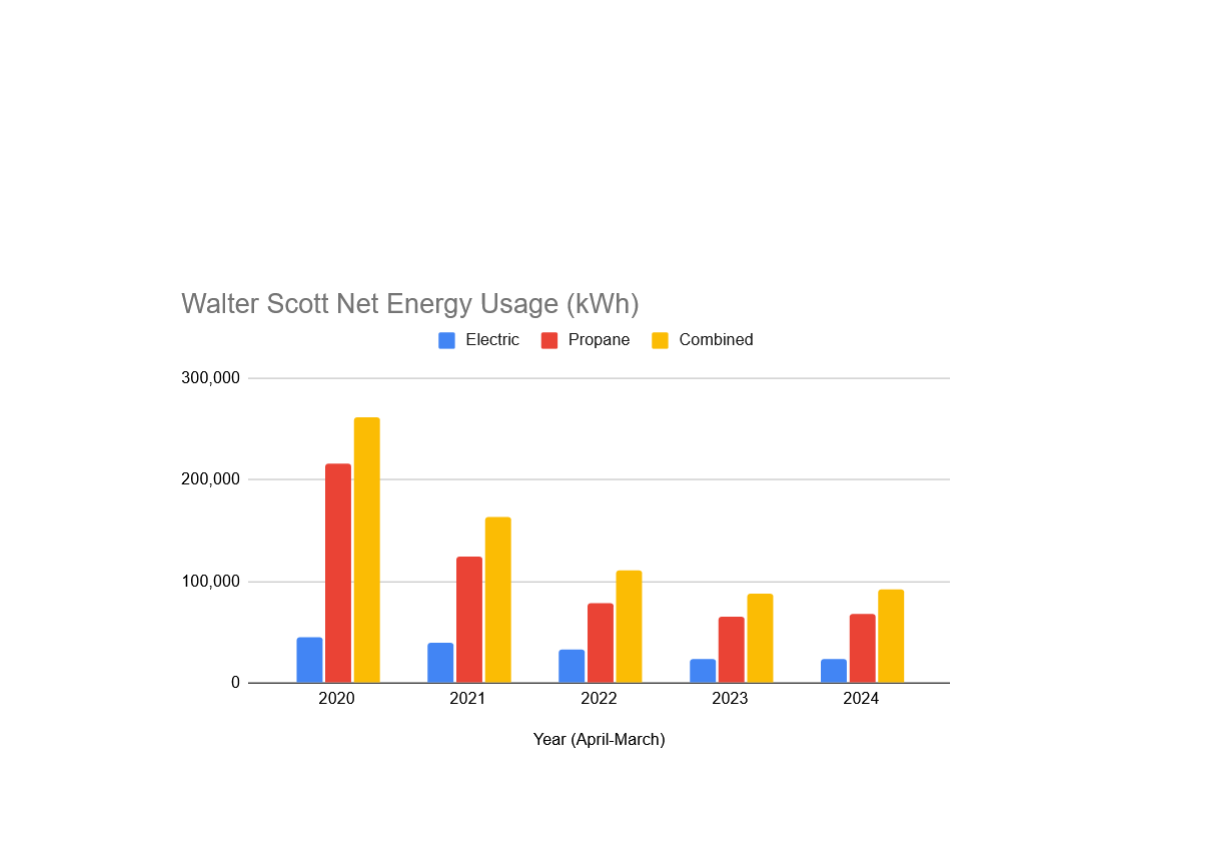
 At Walter Scott, we continue to do our best to care gently for God’s Creation, and reducing our energy usage is a keystone practice in our endeavor. Tracking our utility bills over the past five years, we are able to tell a story of reducing facility energy usage by 66% in the same period we have seen an increase in total overnight stays, total meals served, and total numbers of visitors to the grounds. Propane usage has decreased nearly 70% and net electric is down nearly 50%. To be clear, this data reflects no appliances being converted from gas to electric, but a holistic approach to energy conservation as well as the installation of our first solar array. Let’s dive in to all the changes that added up to make this picture (and which you can do at your church, business, non profit organization, home, or anywhere!)
At Walter Scott, we continue to do our best to care gently for God’s Creation, and reducing our energy usage is a keystone practice in our endeavor. Tracking our utility bills over the past five years, we are able to tell a story of reducing facility energy usage by 66% in the same period we have seen an increase in total overnight stays, total meals served, and total numbers of visitors to the grounds. Propane usage has decreased nearly 70% and net electric is down nearly 50%. To be clear, this data reflects no appliances being converted from gas to electric, but a holistic approach to energy conservation as well as the installation of our first solar array. Let’s dive in to all the changes that added up to make this picture (and which you can do at your church, business, non profit organization, home, or anywhere!)✅ Turning off and unplugging appliances when not in use
✅ Heating unused spaces only to 50F in the winter and cooling only to 80F in the summer (with regular checks by onsite staff)
✅ Conducting an energy audit
✅ Replacing all lighting fixtures with direct wired LED lights
✅ Having our outdoor lights able to be turned off via switches
✅ Installing our first solar array
✅ Evaluating actual property usage to make decisions around shutting down larger systems and appliances
✅ Repairing gaps, cracks, and holes to make buildings more airtight
A lot of these took years to accomplish as like in many churches, there is just a lot of stuff to inventory, understand, and then implement an energy conservation strategy around. Usage varies from month to month and best practices take a while to learn. Nonetheless, we are convinced this is the way to steward what we have been entrusted with. This is just the first half of the decade, and now we start chipping away to get our net energy usage to 0 by the end of 2030. Our geothermal conversion will make a large dent into reducing our energy usage, but alone won’t get us all the way there. Additional solar arrays with battery backups will not only help us meet this goal, but also provide us with resiliency so we can best live into our faith as caretakers and restores of the earth.